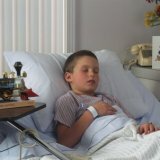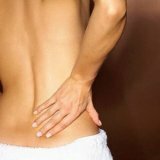Urinary incontinence in men

Urinary incontinence is an incontinence, it is an involuntary and uncontrolled urinary excretion. Until recently, this ailment was regarded as an ailment associated with a variety of factors. But the widespread incontinence in people of urine forced specialists to review and classify it in a new way, not simply as a symptom, but as a disease related to urology.
Causes of development of
The causes of incontinence are usually many factors. Dysfunction of the lower sections of the urinary tract, meaning and incontinence, often occurs as a result of a decrease in the control of the central or peripheral nervous systems, entailing various violations of the pelvic organs. Incontinence is often observed in those patients who have neurogenic disorders - this may be multiple sclerosis, cerebrovascular disorders, spinal cord injuries, diabetes mellitus, Parkinson's disease, congenital malformations in the spinal cord.
The most frequent causes of incontinence in men are a condition of acquired nature, leading to a change in the pelvic organs of anatomy of the relationship( bladder and urethra), or a violation of the sensitivity of these organs, which include consequences after prostate surgery with radical prostatectomy, transurethral manipulation. The cause may be radiation therapy, trauma of the spinal cord or brain, in which the bladder comes out of control.
As for urodynamics, this ailment, regardless of type, occurs when the pressure inside the bladder becomes higher than the intra-urethral pressure. However, the nature of these disorders of hydrodynamics, concerning urgent and stress incontinence, is different.
Urgent incontinence of urine - the reason can be in the hyperactivity and in the hyperreflexia of detrusor. Much less often this kind can be found in the case when the relaxation of the urethra occurs spontaneously, with its instability. The reason for hyperactivity is in increased afferent activity, in weakened suppressive control performed by the nervous system and peripheral nerve nodes, in increasing detrusor sensitivity to stimulation.
Stress incontinence. Its causes in the following - the sphincter mechanism is insufficient, it does not provide sufficient resistance to a sharp rise in intra-abdominal and, consequently, intravesical pressure. Sphincter insufficiency often occurs due to mechanical damage that appears in the neck of an organ such as the bladder, in the operation of organs located in the small pelvis, when the pelvic plexus is affected. Radiation therapy, age-related changes in the blood supply and altered neurohumoral regulation can also be the cause of insufficiency.
Diagnosis of
The main task of a doctor is to find out the reasons. Measures of a diagnostic nature should be objective in confirming the presence of incontinence, should detail all the symptoms, establish the typicality, identify those factors that determine the peculiarity of the course of the pathology process and give a qualified prognosis regarding the effectiveness of the prescribed treatment.
When talking to a patient, you need to get all the information about the presence of other disorders associated with urination - a weak jet, incomplete emptying, intermittent or several urination, pain associated with urination, with visual changes in urine. It is necessary to pay attention to other urological diseases: it is urolithiasis, hormonal dysfunction, sexual disorders.
Cough test. They are carried out in this way: fill the bladder with 200 ml of fluid, ask the patient to strain, cough, to provoke an increase in pressure inside the peritoneum. The sample is considered positive when urine from the urethra is released involuntarily when coughing.
Filling the diary
Instrumental examination - endoscopic, radial, functional and urodynamic.
Combined urodynamic study - uroflowmetry, cystometry, profilometry, threshold determination, are considered the most effective ways to assess the function of the lower part of the urinary tract.
Treatment for men
It depends on the specifics of the causes that cause inconvenience. Consultation and examination allows you to prescribe a particular treatment, which can be both medicated, including physiotherapy, and surgical.



